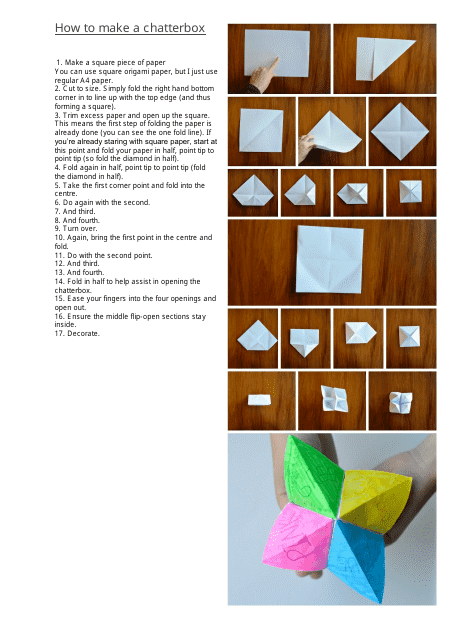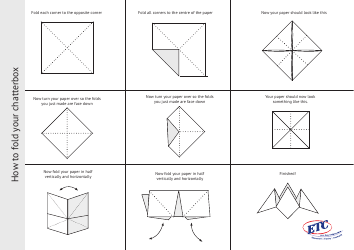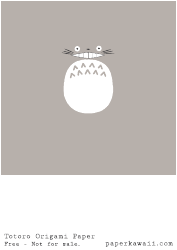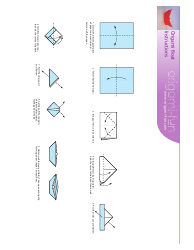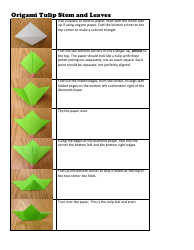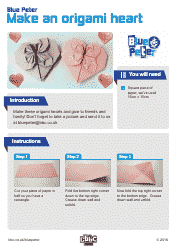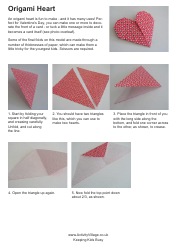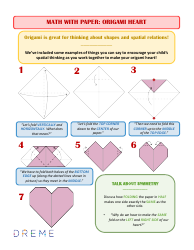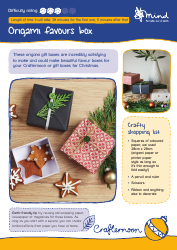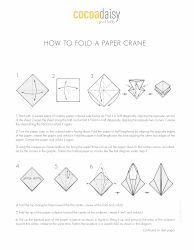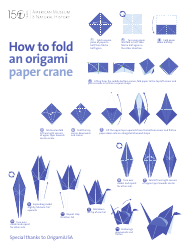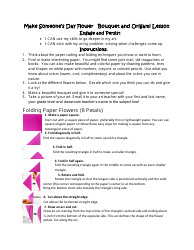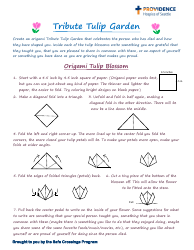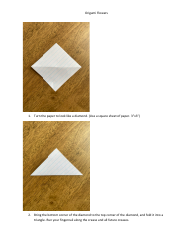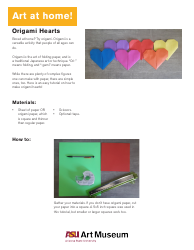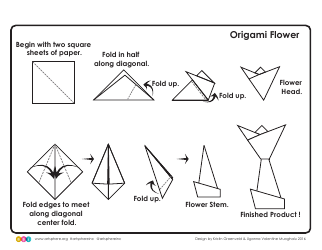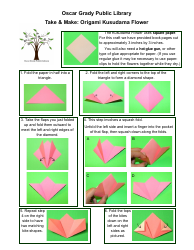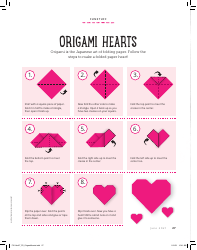Origami Paper Chatterbox - Varicolored
Origami Paper Chatterbox, also known as a fortune teller, cootie catcher or salt cellar, is a form of origami used in children's games. This varicolored paper toy is usually made by children for play. The player asks a question, and the chatterbox provides the answer. The inside of the chatterbox may contain colors, numbers or fortunes. The colorful design makes it more attractive and fun for children. The origami paper chatterbox is not only used for entertainment, but it's also a great tool for teaching children about origami and improving their manual dexterity.
FAQ
Q: What is an Origami Paper Chatterbox?
A: An Origami Paper Chatterbox, also known as a fortune teller, cootie catcher, or salt cellar, is a form of origami used in children's games. It is made from a single, varicolored piece of paper that's folded and marked with colors, numbers, and 'fortunes'.
Q: How do you make an Origami Paper Chatterbox?
A: To make an Origami Paper Chatterbox, start with a square piece of paper, fold it diagonally in both directions and open it again. Fold each corner into the center, flip the paper, and repeat the process. Write colors on the outside flaps, numbers on the inside, and fortunes underneath.
Q: What does the term 'varicolored' mean?
A: Varicolored refers to multicolored or having a variety of colors.
Q: Are Chatterboxes only popular in Japan?
A: No, while origami originated in Japan, the use of origami, including the making of chatterboxes, is popular globally. Children across multiple countries including the United States, Canada, India, and Australia enjoy creating and playing with Origami Chatterboxes.
Q: Can Origami be a tool for education?
A: Yes, origami can be an effective educational tool. It can help improve children's spatial visualisation skills, and can also be used to teach geometry, art, and cultural aspects related to origami's Japanese roots.
